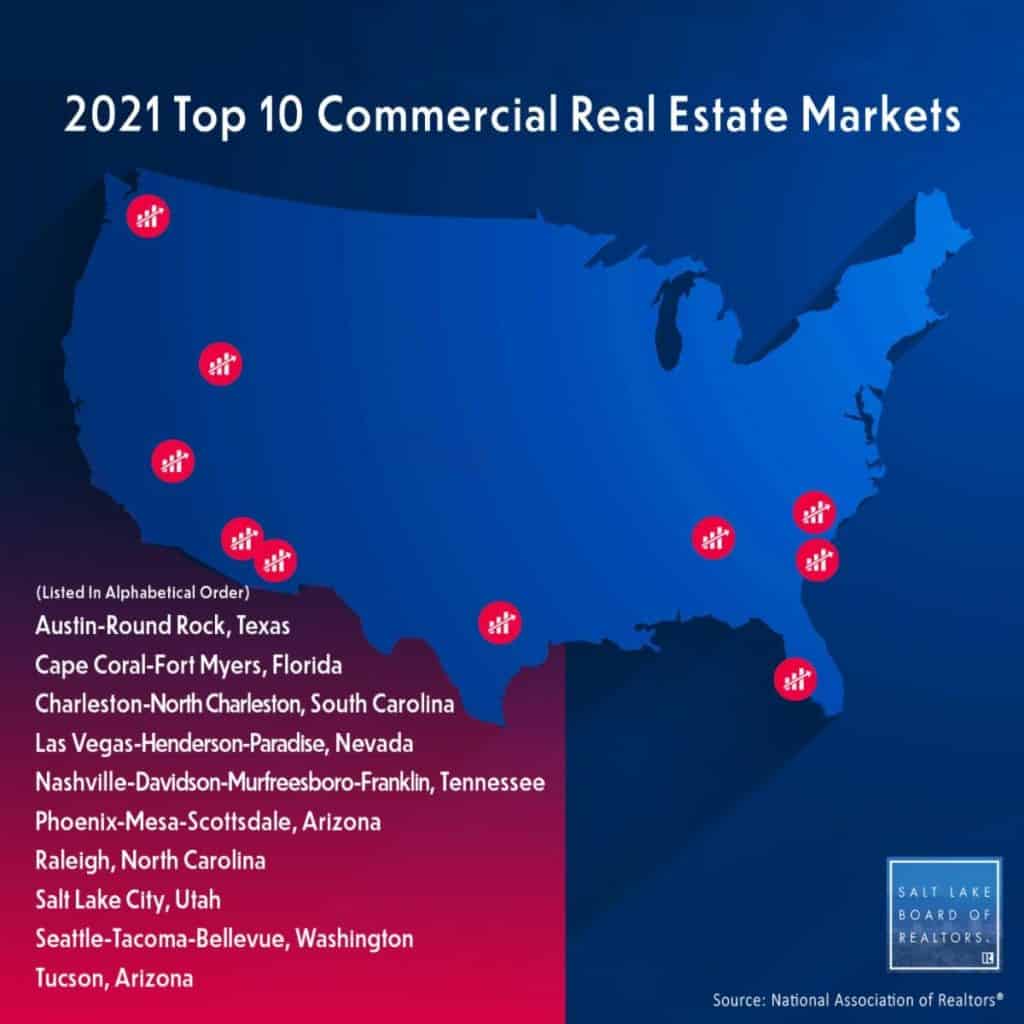Top 10 commercial real estate markets for 2021

NAR Study Puts Salt Lake in Top 10 Commercial Markets
The National Association of Realtors® identified the top 10 commercial real estate markets for 2021. They are: Austin-Round Rock, Texas; Cape Coral-Fort Myers, Florida; Charleston-North Charleston, South Carolina; Las Vegas- Henderson-Paradise, Nevada; Nashville-Davidson-Murfreesboro-Franklin, Tennessee; Phoenix-Mesa-Scottsdale, Arizona; Raleigh, North Carolina; Salt Lake City, Utah; Seattle-Tacoma-Bellevue, Washington; and Tucson, Arizona. NAR selected the top 10 markets after considering 25 indicators on an area’s economic, demographic, housing, and commercial market conditions in the multifamily, office, industrial, retail, and hotel property sectors. Some of the indicators included GDP growth, unemployment rate, median household income, consumer spending, number of business openings, population growth, homeownership rate, rental vacancy rate, building permits and apartment rent, among other variables. “The top commercial real estate markets that are expected to outperform the rest of the nation are generally affordable and able to draw new residents with a greater flexibility to work from home,” said NAR’s Chief Economist Lawrence Yun. “These growing markets also offer much lower office and retail rents and are, therefore, able to attract new and expanding businesses.”
Gay Cororaton, NAR’s senior economist and director of housing and commercial research, anticipates the multifamily, industrial, and retail sectors will drive the commercial real estate recovery this year, but says it may take longer for office occupancies to reach pre-pandemic levels. “Multifamily and industrial remain the commercial market’s bright spots,” Cororaton said. “With wide differences in commercial and apartment rents across metro areas, development will turn to less expensive markets that are closer to the gateway cities. However, office vacancy rates will remain elevated, even with full office-job recovery by the middle of 2022, due to some shifting toward a nationwide work-from-home culture.”


